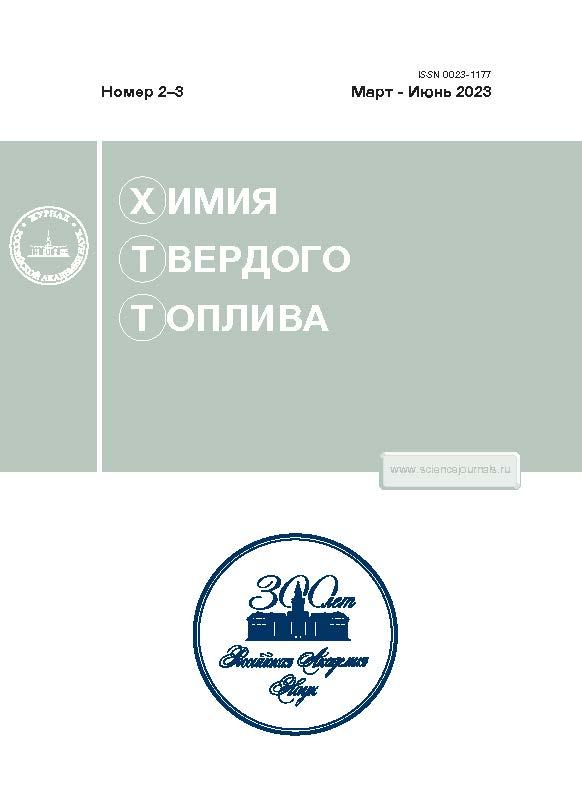Influence of Acid Reagents on Oil Sediment Formation
- Authors: Prozorova I.V.1, Yudina N.V.1
-
Affiliations:
- Institute of Petroleum Chemistry, Siberian Branch, Russian Academy of Sciences
- Issue: No 2-3 (2023)
- Pages: 59-64
- Section: Articles
- URL: https://cardiosomatics.ru/0023-1177/article/view/661890
- DOI: https://doi.org/10.31857/S0023117723020123
- EDN: https://elibrary.ru/BPPMVI
- ID: 661890
Cite item
Abstract
The formation of oil sediment in highly paraffinic oil in the presence of carboxylic and naphthenic acids was studied. The influence of the concentration and composition of acids on the process of sediment inhibition and the concentrations of paraffins, resins, and asphaltenes in sediments was demonstrated. In the composition of sediments obtained from oil with the addition of acidic reagents, the amount of light n-alkanes increased and the fraction of higher molecular weight hydrocarbons decreased. The concentrations of aliphatic fragments and carboxyl groups in the resins of sediments obtained with the addition of acidic reagents decreased, and the aromaticity coefficient increased. Asphaltenes in the sediment were characterized by a decrease in the concentrations of aromatic structures and carboxyl groups.
About the authors
I. V. Prozorova
Institute of Petroleum Chemistry, Siberian Branch, Russian Academy of Sciences
Email: piv@ipc.tsc.ru
Tomsk, 634055 Russia
N. V. Yudina
Institute of Petroleum Chemistry, Siberian Branch, Russian Academy of Sciences
Author for correspondence.
Email: natal@ipc.tsc.ru
Tomsk, 634055 Russia
References
- Zahedi-Nejad, Bahrami M., Torkaman M., Ghayyem M. // J. Petrol. Sci. Eng. 2021. V. 205. № 10. P. 108858. https://doi.org/10.1016/j.petrol.2021.108858
- Daniel Molina V., Emiliano Ariza León, Arlex Chaves-Guerrero // Energy Fuels. 2017. V. 31. № 9. P. 8997. https://doi.org/10.1021/acs.energyfuels.7b01149
- Sun W., Wang W, Gu Y., Xu X., Gong J. // Fuel. 2017. V. 191. P. 106. https://doi.org/10.1016/j.fuel.2016.11.063
- Wattana P., Fogler H.S., Yen A. // Energy Fuels. 2005. V.19. № 1. P. 101. https://doi.org/10.1021/ef0499372
- Jung T., Kim J-N., Kang P-S. // Korean J. Chem. Eng. 2016. V. 33. P. 1813. https://doi.org/10.1007/s11814-016-0052-3
- Hosseini-Moghadam S.M.-A., Zahedi-Nejad A., Bahrami M., Torkaman M., Ghayyem M.-A. // Petrol. Sci. Eng. 2021. V. 205. № 10. P. 108858.https://doi.org/10.1016/j.petrol.2021.108858
- Ghloum E.F., Rashed A.M., Safa M.A., Sablit R.C., Al-Jouhar S.M. // Petrol. Sci. Eng. 2019. V. 175. № 4. P. 495. https://doi.org/10.1016/j.petrol.2018.12.071
- Faraoun Abbassia, Mortada Daaou, Bounaceur Boumediene // Energy Sources. 2016. Part A: Recovery, Utilization and Environmental Effects. V. 38. № 19. P. 2830. https://doi.org/10.1080/15567036.2015.1017671
- Yang F., Zhu H., Li C., Yao B. // Petrol. Sci. Eng. 2021. V. 204. № 7. P. 108723. https://doi.org/10.1016/j.petrol.2021.108723
- Razipour M., Samipour Giri M., Majidian N. // Energy Sources. Part A: Recovery. Util. Environ. Effects. 2020. V. 17. № 4. P. 1. https://doi.org/10.1080/15567036.2020.1752332
Supplementary files













